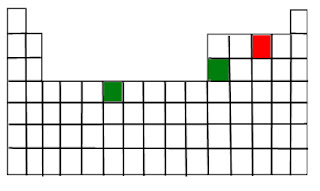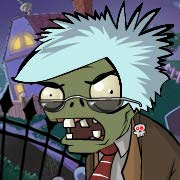If you want some basic information about the Periodic Table be sure to check here: How to use your Periodic Table (Basic)
I’ve been behind with my post about Hydroxides Nomenclature, but it’s coming soon; for that I apologize.
Let’s go beyond now, like I said that piece of paper called a Periodic Table gives a lot of useful information for your chemist needs, if you don’t have one yet get one Get your own Printable Periodic Table.
I’ve always wanted to know how to make equations and how to predict what reactions could happen with elements. Now with the help of some basic knowledge about Nomenclature and our Periodic Table we can.
Let’s check some properties that can be predicted with our Table
ATOMIC RADIUS
Imagine the atom like a Peach, the seed in the center would be the nucleus (where protons and neutrons are) and the rest the electrons around it.
The more neutrons, electrons and protons the atom has, the bigger it is. But it’s a little more complicated than that, because there are other properties that come in place when we want to figure out the Radius.
The protons, neutrons and electrons increase this way on the table.
So intuitively you could say that the radius would increase the same way, but the rule is different, mostly because electronegativity plays an important part, higher electronegativity means smaller atom.
The atomic radius increases this way instead.
ELECTRONEGATIVITY
Electronegativity is the property of atoms to attract/draw electrons into the nucleus, basically is the force of protons(+) attracting electrons(-) closer to the nucleus.
While the atom increases its size with the number of particles, the attraction force makes the electrons layer thinner, it’s like if the peach would have bigger seed but the fruit part is thin.
The electronegativity increases in this way.
This could be one of the most important information you can get from the table, to understand it you need to know that MOST elements follow a certain rule, they are jealous of the Noble Gases, yeah, not kidding, elements want to look like noble gases because they are stable and non-reactive (is normal conditions).
What’s that special characteristic of noble gases that makes everyone wanting look like them? They have their last Shell FULL, that’s it; they have 8 electrons on the last Shell making them unable to react with other elements (this rule does not apply to all elements; some are weird and hard to understand).
You can find that number here; elements on the same group have the same number of last Shell electrons (they are on Roman numbers)
But how would elements would try to look like noble gases??? The only way is losing or gaining electrons, but this is only a fail attempt that gases laugh at, it works though.
Electrons increase this way on the table, and elements are listed and must be read this way.
Each time you move 1 square to the right the number of electrons increases by 1, elements will try to look like the noble gas on the same horizontal line.
Or Bromine like Krypton
These elements must gain electrons to gain the “noble status”, oxygen would need to gain 2 or Bromine just 1.
Elements on this side have a problem, the amount of electrons they need to gain is too big, and their electronegativy is low (Check above) so they don’t have enough “strength” to attract electrons.
So they must do it the other way, they will have to try looking like the noble gas of the horizontal line above of them and that means losing electrons.
Calcium gives away 2 to look like Argon
This group here is similar to calcium or sodium group, although the rule of # of electrons on last shell is kinda tricky, I still can’t understand them well but they lose electrons.
REACTIVITY
So basically you have 2 kinds of elements in reactions, some lose electrons and some are willing to take them, this give and take is what makes chemical reactions happen.
You can predict most of Chemical reactions but like I said, you will need the help of nomenclature to fully understand them
Like Oxides: that is a compound made of Oxygen and a Metal or Non-Metal.
Chemical reactions are a little more complicated than just putting elements together, like I said some lose electrons, some gain them, and some SHARE them, most of the compounds are made of atoms that have shared electrons with other atoms to fulfill that need to become stable.
Coming Up!! Hydroxides Nomenclature (This time for real)






















4 comments:
Wow thank you for this information.
thx for explaining this, but I always get confused with the rare-earth elements can you explain those later?
Chem 101 but this is very concise and helpful.
Could you help me understand a few things? I posted a few questions I had on mathematical physics on my blog under the title Has Physics Become Irrational?
I would really appreciate your help on those questions.
Post a Comment